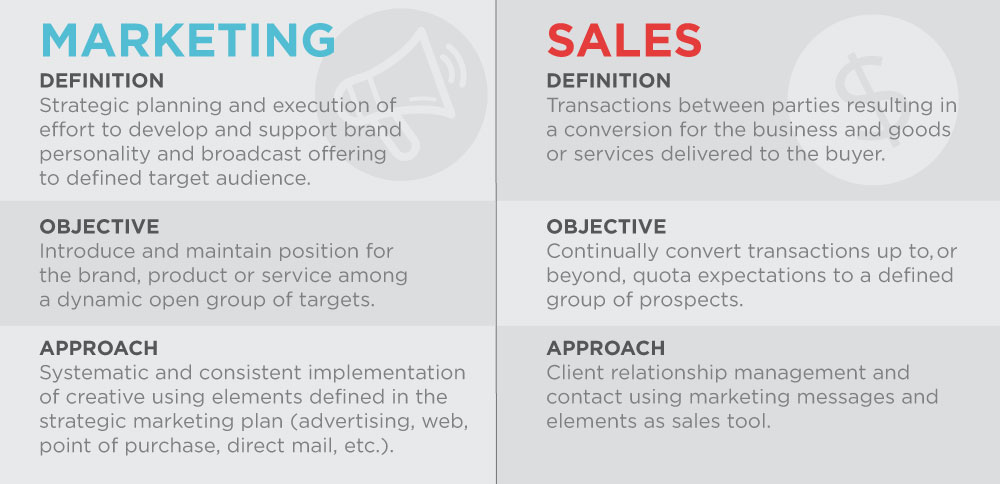Sell the sleep but market the dream!
Balancing longview and short-term objectives for success.
Admittedly, VFC is a small agency with small clients. Most of our clients are owner-operated and don’t enjoy the luxury of a board of directors to inject oversight or, in most cases, even an internal marketing department or director. That’s the value VFC provides—VFC is an outsourced marketing department where clients receive dynamic, strategic marketing plans executed by a team of experienced professionals for less than the cost of a single employee.
Usually, however, small businesses do possess a sales structure of some sort, after all, that’s how they started. These homegrown organizations developed their service, their product or their distribution model and achieved success with sweat-equity through sales. But they never injected strategic marketing into the mix.
In the life-cycle of the small business there comes a time when sales have reached a saturation point and a decisive, well-planned marketing plan can lift up and support that effort, advancing sales to the next level.
So what’s the difference?
First, let’s take both terms quite literally. Sales is selling—the act of completing a transaction between business and consumer. Marketing is letting the market (the potential pool of consumers) know that you’ve got something for sale—something worth buying and, if the marketing is effective, something they need.
With those definitions the equation becomes fairly simple. Effective marketing drives sales and effective sales funds marketing. Both actions are integral to the bottom line.
Marketing and sales are both aimed at increasing revenue. They are so closely intertwined that people often don’t realize the difference between the two. Indeed, in small organizations, the same people typically perform both sales and marketing tasks.
Knowing your role…
We once had a manufacturing/distribution client hire a new director of sales. His first order of action was to pull a year’s worth of our invoices to review them in a team meeting. When we inquired what the point of this exercise was, he replied, nodding toward the owner of the company, “my job is to save him money.”
Wrong. The sales team’s job is to make the business money. All stakeholders should be operating within approved budgets, but if sales isn’t focused on continually increasing moving units at a profit the balanced equation will deteriorate.
He was soon replaced by a sales director adept at managing and motivating people.
Similarly, marketing is responsible for motivating people but, while the sales director is managing a team to reach specific goals and directly motivating leads to make purchases, the marketing director is managing a team that devises methods to introduce the offering to new targets.
This is, of course, an oversimplification. Sales often means selling to buyers instead of consumers and marketing can mean reinforcing the brand in existing markets—as much as it means developing new initiatives into new arenas—in which the sales team can realize success.
The point is, the two teams should be working together closely with defined objectives, budgets and strategic plans.
Goals. Always Goals.
Marketing and sales are both aimed at increasing revenue but the business, at an executive level, needs to set expectations for both. Without objectives neither sales nor marketing can understand success in realistic terms. And without objectives neither sales or marketing is operating with purpose.
Sales expectations are easier to articulate than marketing goals. Businesses can base sales goals on previous cycles or capacity but marketing can be more nebulous. In fact, marketing is much more difficult to measure as it equates to sales, brand recognition, referrals and other consumer touches to which metrics cannot be easily applied.
Marketing focuses on positioning—aligning the brand, offering, product or service with the industry and the consumer in a way that differentiates it from competitors—establishing a defined position in the market. VFC likes to say that we create personalities for brands—content that gives the sales team ammunition! The goal of that positioning, and of all marketing, is engagement. Without engagement, there is no sale.
Sales goals are focused on quota—moving product from manufacturing to consumer with the highest level of profitability. To do that, they require tools—tools developed in the strategic marketing plan!

Be Creative.
In positioning a brand—creating a personality—marketing develops an image that evolves to create campaigns. Creative campaigns include all kinds of consumer touches…attractive corporate identity, clever advertising, engaging Internet presence, captivating packaging, dynamic events—are all developed within the scope of the strategic marketing plan.
But sales can be creative too! New tools make it easier than ever for sales teams to take client relationship management to amazing new levels of productivity. And, all of the marketing devices developed for wider distribution can—in the scope of a sales meeting—be repurposed to showcase the brand personality.
Marketing might focus on an unlimited universe of people, while sales tends to focus on individuals or a small group of prospects, but the end game is the same—create a conversion.

Marketing perpetuates the brand—attempting to get people to visit the store or the web page—while the sales focus is on achieving successful specific interactions.
While sales are generally a short-term proposition and marketing involves the longview, both are dependent on operations. Operations or manufacturing must work with sales to understand market need to maintain capacity. They must work equally effectively with marketing, who undertakes competitive analysis and market research, to collaborate on logistics like design.
In fact, if all parts of the machine are not competent, productive and adept at working with one another to accomplish individual goals, the machine will not run efficiently.

